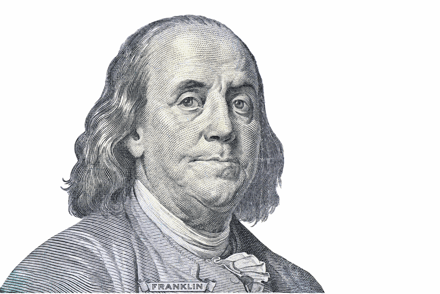
We have heard (separately) from two precast manufacturers that it costs $25,000 to conduct an inventory count. If there is one process that immediately justifies automated data collection, this is it. While the cost naturally depends on the size of the yard... they both have yards of about 40 acres... automating inventory counts for yards of any size will produce obvious savings. RFID tracking is the solution to this and, with a few kinks to work out, there are a few ways that this will happen.
RFID (Radio Frequency Identification) tracking is enabled by anchoring a tag into the concrete during the pour. It remains as a face plate on the side of the piece that can be read by an RFID scanner. The information that the scanner picks up is a 24-digit number that serves as the serial number of the piece. When that number is populated in a system like Idencia, information about the piece can be collected and associated with its serial number. This is much the same process as that used in a supermarket when a barcode is scanned.
There are three ways that RFID systems will be used to tackle the cost of inventory counts:
1. Using hand-held scanners
 Walking the yard and scanning RFID tags is a simpler... and much more accurate... way of recording inventory then counting manually. Because each piece is recognized when the tag is scanned, errors related to miscounts and mistaken identity are virtually eliminated. Systems like Idencia enable users to run a report afterward that reconciles pieces that were "counted" with those in the system. Those that were missed can be identified easily and subsequently included.
Walking the yard and scanning RFID tags is a simpler... and much more accurate... way of recording inventory then counting manually. Because each piece is recognized when the tag is scanned, errors related to miscounts and mistaken identity are virtually eliminated. Systems like Idencia enable users to run a report afterward that reconciles pieces that were "counted" with those in the system. Those that were missed can be identified easily and subsequently included.
The advantage here is that this requires fewer people and less time to complete the process. The challenge of using hand-held scanners is that read range can be limited, making it tough to scan pieces stacked on top of each other. This can be addressed by using large tags (which have a longer read range) and directional scanners (providing longer read range but which require more direct line of sight). In both cases, it is important that stacking does not impede access to the tags.
2. RFID reader on a forklift
 Scanners called "fixed readers" can be mounted on a forklift or cart that can travel the yard and scan tags automatically. The tags are recognized and populated into the same report (described above) that allows reconciliation.
Scanners called "fixed readers" can be mounted on a forklift or cart that can travel the yard and scan tags automatically. The tags are recognized and populated into the same report (described above) that allows reconciliation.
By automating the collection, this method improves the speed of the overall process.
The disadvantage is that tags are not likely to be uniformly arranged, so achieving desired consistency of data capture can be challenging when scanning from a forklift. However, there are excellent RFID system integrators that thrive on these engineering challenges and have solved these problems in the warehouse.
3. Drone scans
 The most promising solution for performing inventory counts is found in using drones equipped with RFID scanners. A drone will be programmed to fly a route through the yard, rising and dipping to record the tags in stacked pieces. Once complete, the inventory count will be transmitted back to the software for reconciliation by WiFi or a cellular network.
The most promising solution for performing inventory counts is found in using drones equipped with RFID scanners. A drone will be programmed to fly a route through the yard, rising and dipping to record the tags in stacked pieces. Once complete, the inventory count will be transmitted back to the software for reconciliation by WiFi or a cellular network.
The primary inhibitor to using drones is short battery life, made more problematic by the heavy payload they need to carry (RFID reader and antennae). Right now, battery life is only about 10 minutes. There are work-arounds, such as using multiple drones, but this contributes some minor complexity that is counter to the need for a simple solution. As battery life improves, drone scanning will become the standard.
At Idencia, we recognize that automating inventory counts will solve a big problem for our customers. We are currently working on refining the solution and we're fortunate to be in partnership with some excellent system integrators and willing customers. If you would like to discuss using RFID to reduce the cost of your inventory counts, we hope you will schedule a consultation.
About Idencia
Our mission at Idencia is to elevate the productivity of infrastructure. We offer RFID tracking solutions that improve productivity and offer value throughout the value chain. As a cloud-hosted product tracking system that is seamless between manufacturers, contractors and asset managers, Idencia adds information value to all, eliminates redundancy and saves time.
Forklift photo courtesy of POSDATA Group, Inc.
Drone photo courtesy of PINC Solutions

May 6, 2019 3:19:22 PM




Comments